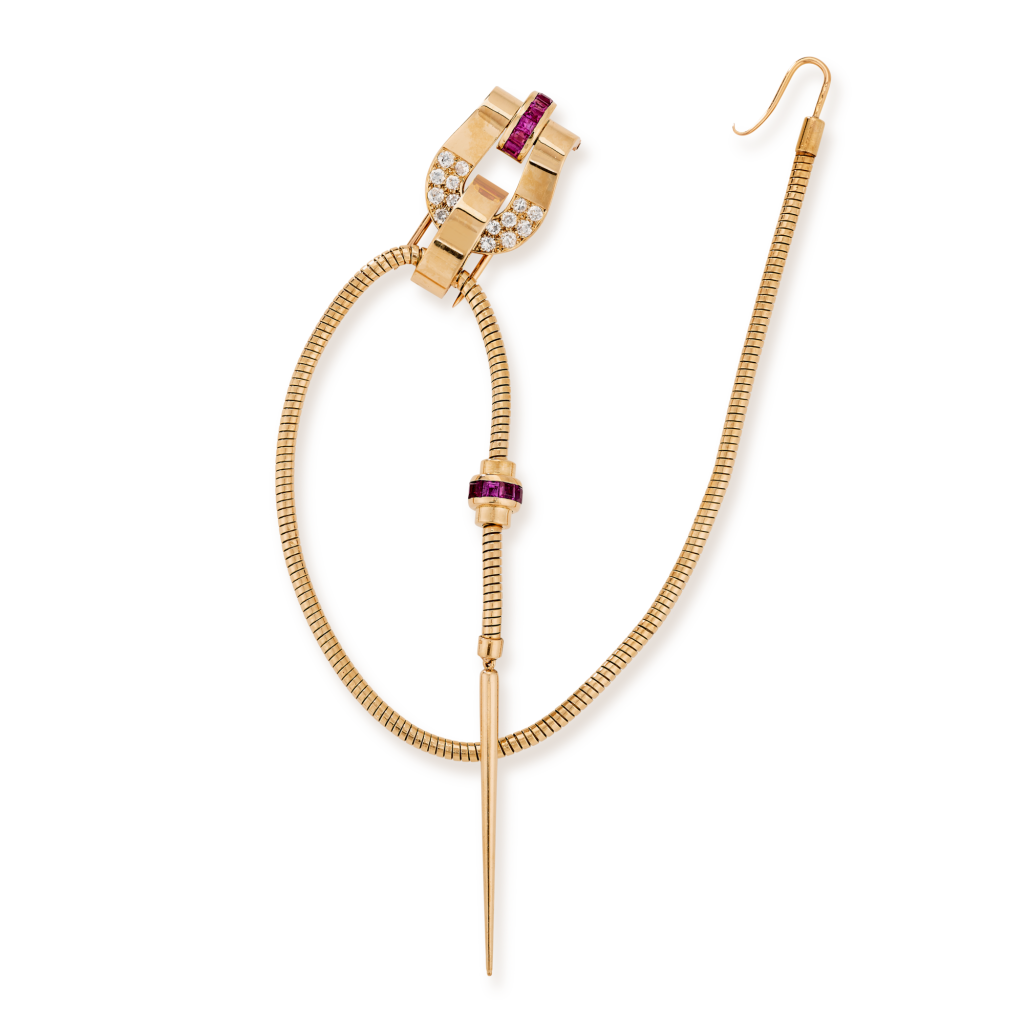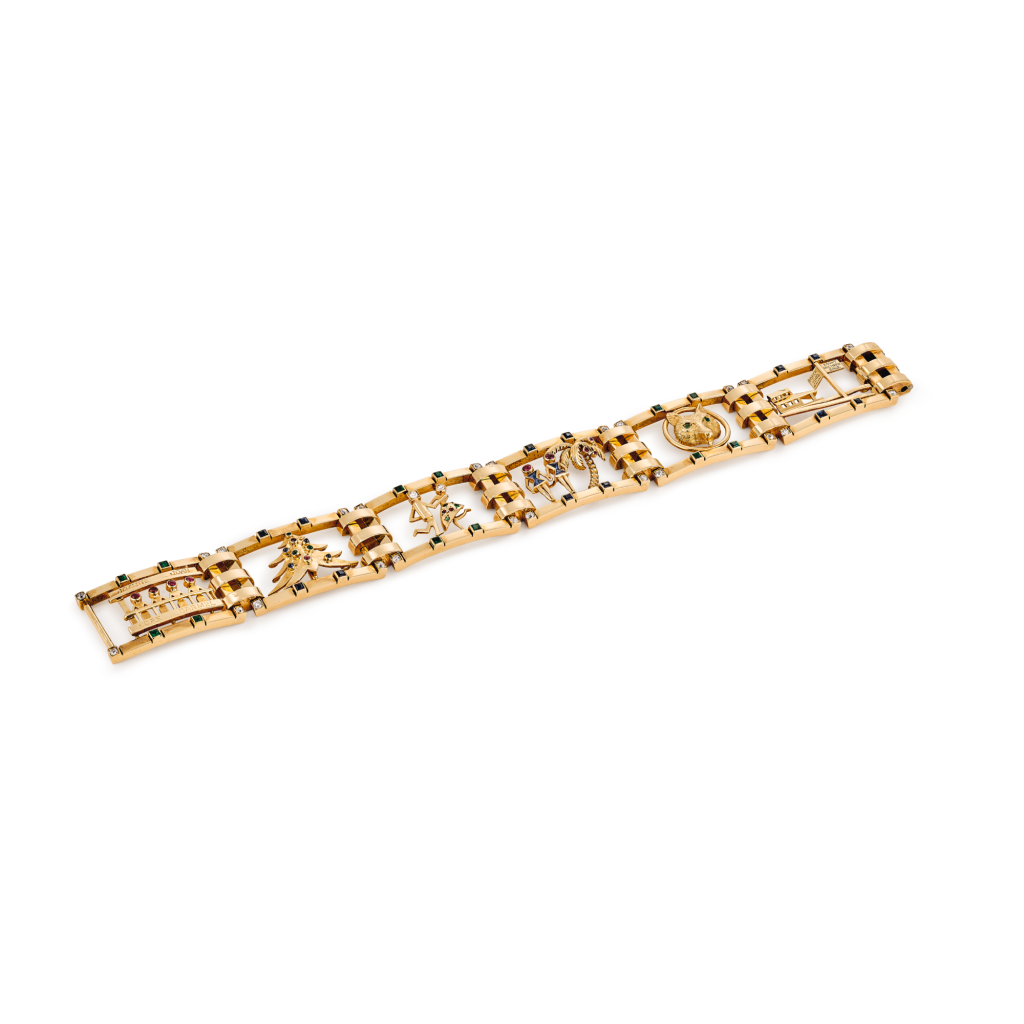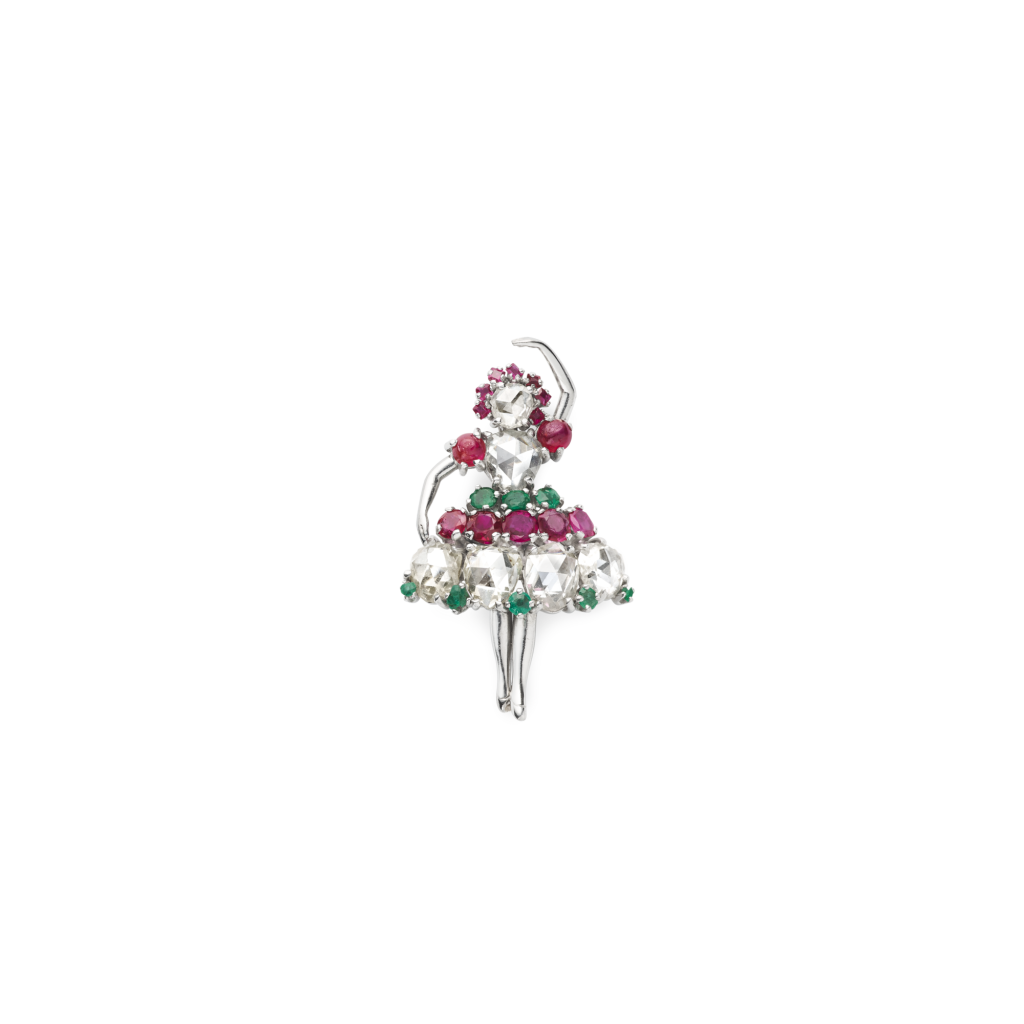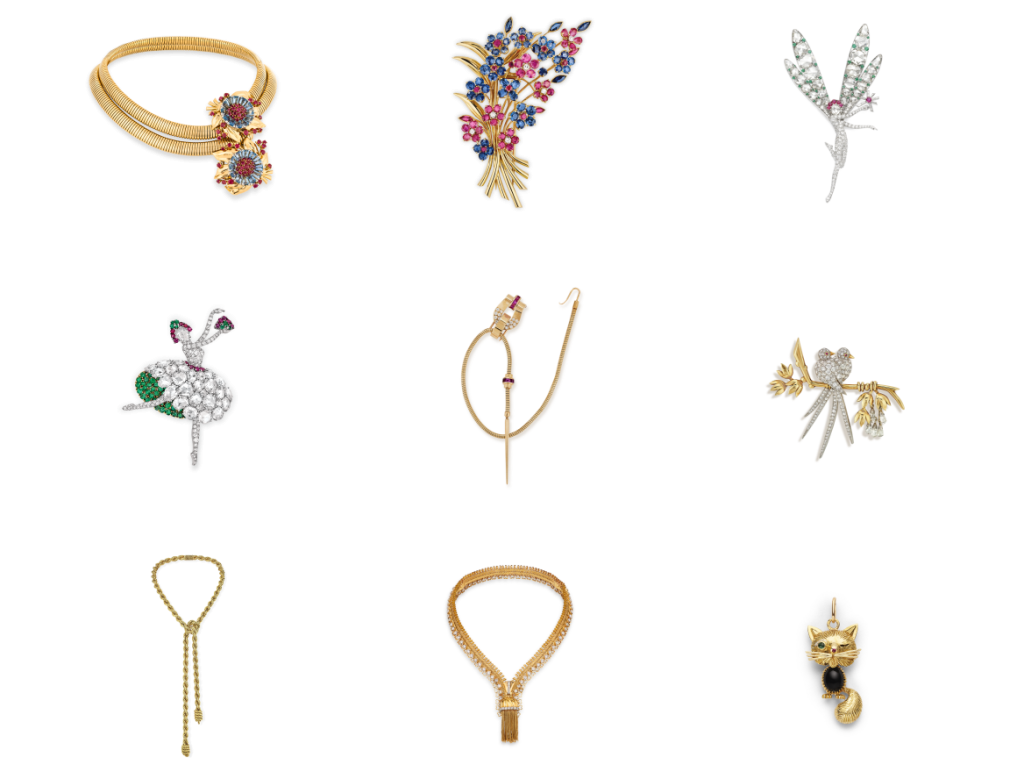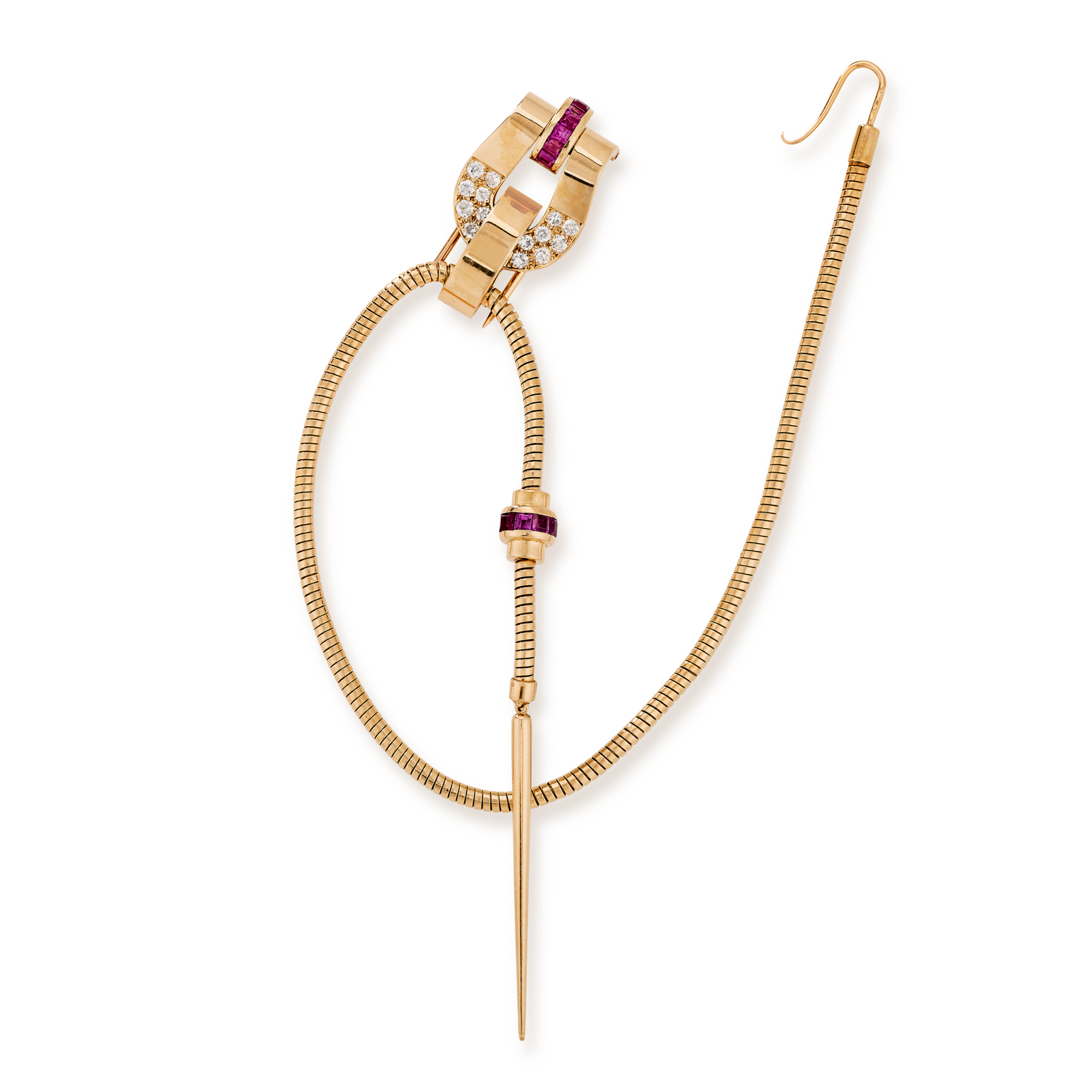
Fourragère clip
Creation details
- Creation year 1942
- Stone Diamond
- Stone Ruby
- Material Gold
- Usage Clip
- Dimensions 132 × 53 mm
The Fourragère clip was inspired by military decoration, and shows the influence of military costume on fashion during the Second World War. The cotton braid of military decorations is replaced here by a yellow gold snake chain.
One end has a metal tip, preceded by a row of calibrated rubies surrounded by yellow gold in place of the traditional four-turn knot. The other end forms a hook to attach the chain to the clip that forms the shoulder motif—a yellow gold buckle highlighted with brilliant-cut diamonds. The clip’s peg is pave-set with calibrated rubies, while a polished yellow gold loop links the chain to the buckle.
The different designs and ways to wear the Fourragère
Van Cleef & Arpels produced numerous variations of the Fourragère. These ornaments are still inspired by the Modernism of the 1930s, favoring motifs taken from architectural vocabulary, such as volutes. From 1943, they drew widely upon the fashion arts and, to a lesser degree, floral decoration. One of the most popular models features a chain suspended from a ribbon, ending in yellow gold and diamond sequins. The Fourragère was usually worn on a jacket lapel, like military insignia, but it could also adorn a hairstyle.1Joffé, “Put your hair back,” Vogue US (October 1, 1945): 166.
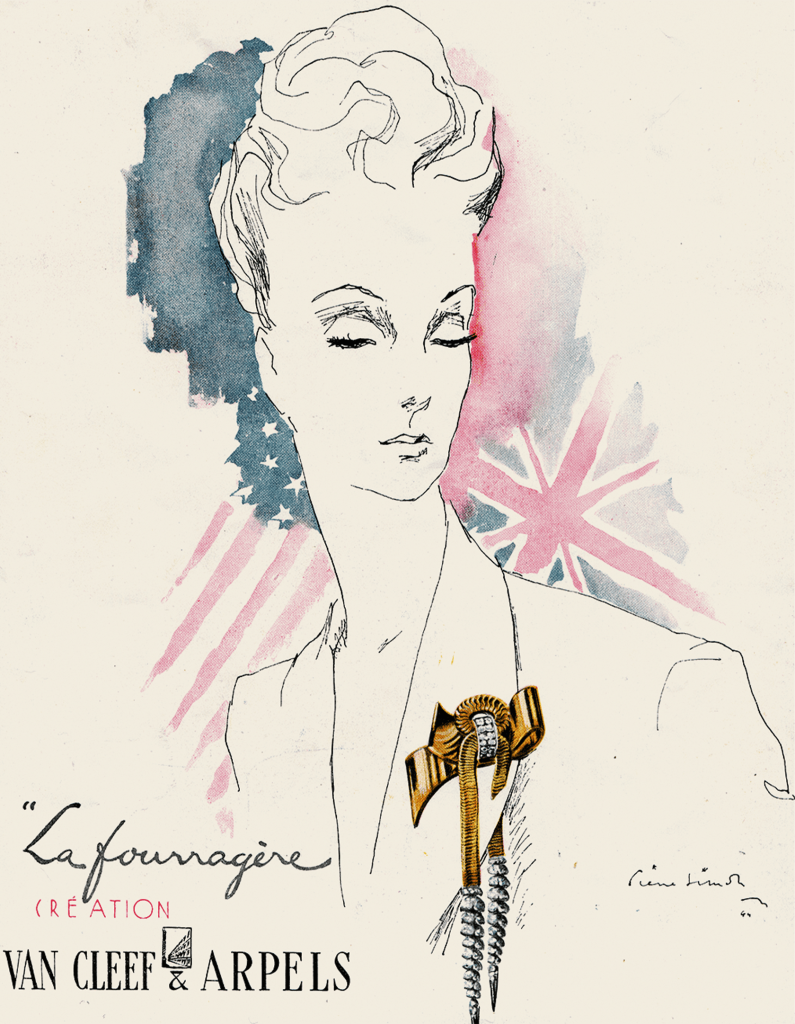
A creation that bears witness to the war
The Fourragère is just one of many examples of civil dress borrowing from military costume at that time, as well as women’s wardrobes borrowing from men’s. References to uniform multiplied during the War period, breathing new life into the work of designers who focused on its functionality, practicality, and symbolism. In the 1940s, women’s suits were cut shorter in the name of patriotism, due to textile restrictions.2Iris Cartron, “Prestige de l’uniforme : le vêtement militaire dans la mode française (années 1960–années 1980)” (master’s thesis, Université Paris I Panthéon Sorbonne, 2020), n.p. Fourragères were worn on the lapels of these suits as an elegant symbol of support for the French soldiers defeated in 1940.
To go deeper
